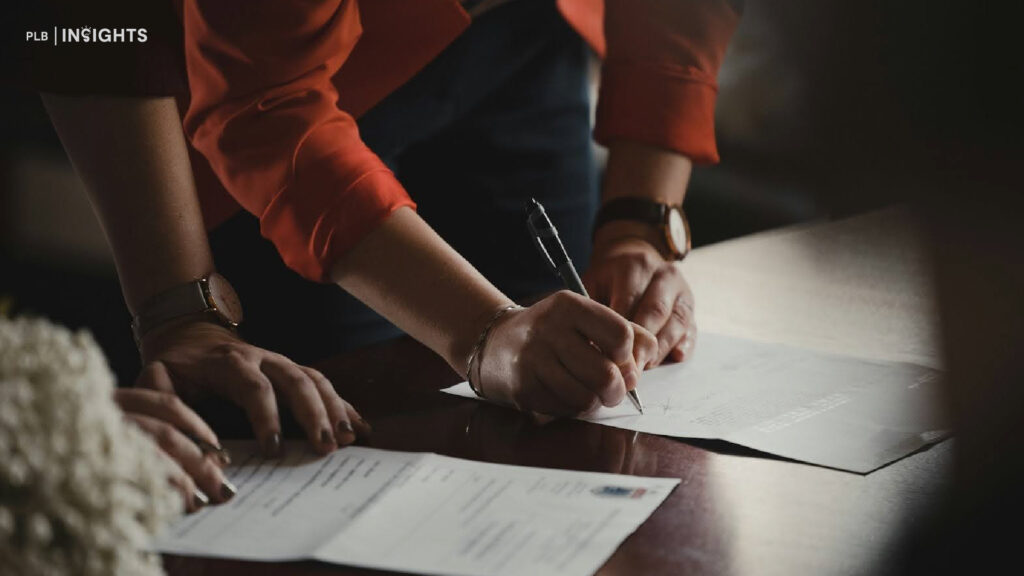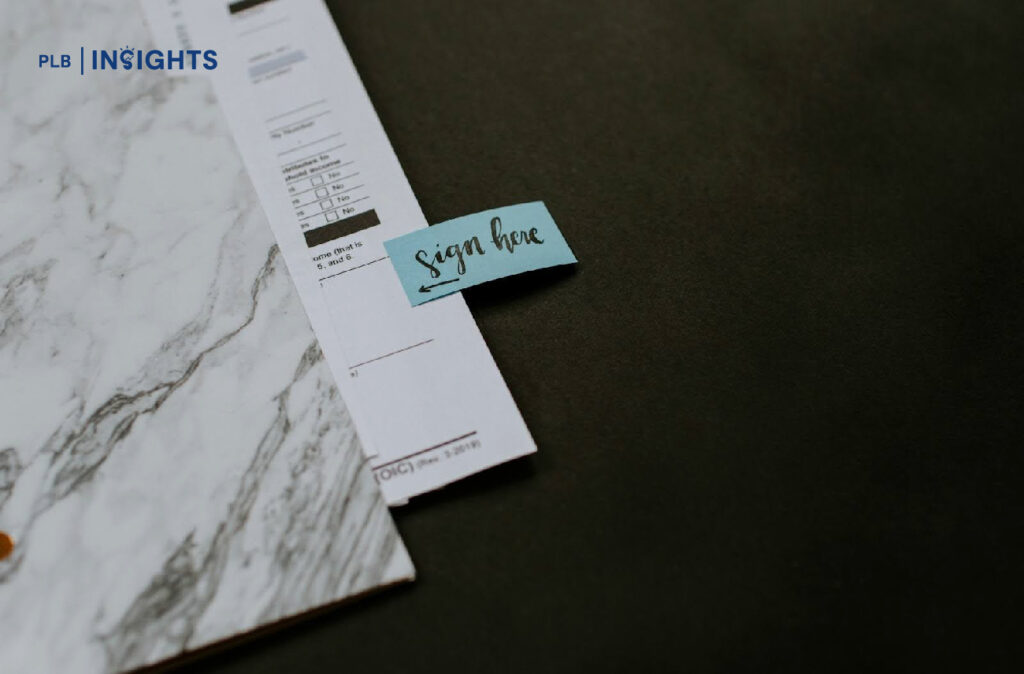
Buying a home is a significant milestone in life, but navigating the intricacies of the home-buying process can be daunting – especially when it comes to the legal aspects of property transactions. The conveyancing process is one such aspect that plays an important role in transferring property ownership from the seller to the buyer. Understanding the ins and outs of conveyancing in Singapore is essential to ensure your property purchase is secure and lawful.
In this article, we will provide you with a comprehensive overview of conveyancing in Singapore by breaking down the details, highlighting the conveyancing process, and offering tips to help you navigate the process effectively.
Understanding Conveyance: What is it?

Conveyancing refers to the legal process of transferring property ownership, or a land title, from one party to another. It is governed by the Conveyancing and Law of Property Act, outlining the legalities of the process of property transactions in Singapore.
Once a buyer is eligible to purchase the property, some things they must take note of before starting the conveyancing of the property ownership are the price, land/floor size, fees that will be incurred, and financing options. Conveyancing lawyers also take a look at the property’s title and tenure, verifying whether or not there are any encumbrances, and assist buyers throughout the process.
The conveyancing process varies slightly depending on the type of property you are acquiring to ensure compliance with relevant laws and regulations. The ownership of property titles varies for the two main types of property tenures in Singapore: Freehold and Leasehold properties.
The conveyancing process is the same for both types of property tenures, however, there can be slight differences in terms of factors that must be considered during the property transfer. Buyers of leasehold properties may need to consider the lease decay, the remaining lease term, and the potential for an en-bloc in the future that may bring up concerns or issues. Conveyancing a freehold property might emphasise looking at potential encumbrances on the property, along with the verification of title deeds and ownership rights.
Working With A Conveyancing Lawyer

The conveyancing process involves several key steps that ensure the transfer of property ownership is done in a legal and transparent manner. Conveyancing lawyers specialise in property law and have the expertise required to navigate the complexities of this process and protect the interests of their clients.
In this case, it is important to work with a conveyancing lawyer for several reasons.
Conveyancing lawyers are required to practise thorough due diligence when working with their clients. Their job is to verify all ownership details, check for any property defects, identify legal issues that could affect the transaction. They are qualified to draft and review legal documents like the sales and purchase agreement, the transfer deed, and mortgage loan agreements.
Moreover, conveyancing lawyers can assist you in ensuring that all legal requirements, payments of any duties, registration of property transfer and compliance with zoning regulations are met. They oversee the completion of the property transaction. Their expertise allows conveyancinge lawyers to help clients make informed decisions. Mitigate risks, explain the implications of certain documents, and advocate for their clients’ interests during the transaction.
The Conveyancing Process
The conveyancing process in Singapore involves several key steps that are required for transferring the ownership of a property from the seller to the buyer. Moreover, the entire process can take approximately between 8 to 12 weeks after exercising the Option to Purchase (OTP).
Let’s go over the key stages of the conveyancing process in Singapore.
1. Option to Purchase (OTP)
Once a buyer has decided on a property to purchase and the buyer and seller have agreed on a price, the negotiations between lawyers on both sides begin. As the seller accepts the offer to sell their property to the buyer, they must grant the buyer a document known as the Option To Purchase (OTP) in exchange for a deposit, known as an option fee.
The OTP grants buyers the right to purchase a property at an agreed price within a specified timeframe, usually 14 days after signing it. This period is crucial for buyers to decide whether to proceed with the purchase, a step commonly known as exercising the OTP.
It is advisable for buyers and the lawyers representing them to thoroughly conduct due diligence before agreeing to sign and exercise the OTP.

2. Engaging Your Lawyer
A conveyancing lawyer is involved from the beginning, conducting title searches and verifying agreement terms. At this stage, the lawyer performs all necessary checks on the seller and their property.
After this, the conveyance lawyer lodges a caveat to the Singapore Land Authority (SLA). This is a legal notice that informs neutral third parties that the buyer has an interest in the property and prevents the seller from selling the property to any other parties during the conveyancing process.

3. Payment of Stamp Duties
The next stage involves the payment of duties. Stamp duties must be paid by the buyer within 14 days of exercising the OTP, based on the purchase price of the property. Stamp duties include the Buyer’s Stamp Duty (BSD) and Additional Buyer’s Stamp Duty (ABSD), if applicable.
Along with this, all the necessary documents regarding the payment of these duties are submitted to the Inland Revenue Authority of Singapore (IRAS).
4. Completion of Transfer of Ownership
On the completion date specified in the Sale and Purchase (S&P) agreement between the buyer and seller, the final stage of the conveyancing process involves the completion of the transfer of ownership from the seller to the buyer.
The buyer pays the balance of the purchase price, and the Transfer Deed is signed to formalise the property transfer. The conveyancing lawyer must also register the property transfer with the Land Titles Registry, update the property title to reflect the new ownership, and ensure that all legal requirements are met for the transfer to be legally binding.
Common Issues and How You Can Avoid Them
The conveyancing process comes with several complexities that must be carefully worked through, and this can sometimes cause issues to arise. Some common issues that can arise in the conveyancing process include inspection issues, title defects, discrepancies in property details, and delays in the completion of the transaction.
Inspection Issues
Property surveys and inspections can sometimes reveal structural defects, electrical or plumbing issues, maintenance issues or other concerns that may impact the property’s condition or value.
By addressing inspection findings proactively during the conveyancing process with the assistance of qualified professionals and a conveyancing lawyer, buyers can ensure they enter into the property transaction fully informed. This approach helps in effectively resolving any issues that may arise, minimising potential risks and ensuring a smoother property transaction.
Title Defects
Title defects arise when there are errors or discrepancies in the property title. This includes incorrect ownership details, encumbrances or boundary disputes. The errors can range from ones that are simply clerical to ones that cause disputes over the rights of different parties.
To avoid title defects, buyers can conduct thorough due diligence, work with an experienced conveyance lawyer and ensure that all title documents are vetted meticulously.
Discrepancies in Property Details
Discrepancies in property details, no matter how minute, can also lead to complications during the conveyancing process. These errors can include but are not limited to zoning restrictions, incorrect floor area measurements, and unapproved renovations.
To avoid this common issue buyers can conduct a physical inspection of the property they are purchasing and request any relevant documents, like building plans and approvals, to verify the accuracy of the property details.
Delays in Completion
Delays in completing the property transaction can occur due to several reasons, such as unresolved legal issues, missing documents, delays in loan approvals, or disputes between the parties involved.
To avoid these delays, all parties involved in the transaction need to communicate effectively and openly, work closely with their conveyancing lawyers to address concerns that arise, and promptly respond to any requests for information.
Working with experienced professionals, conducting thorough due diligence, and maintaining open communication with all of the parties involved in your property transaction can help mitigate these common issues along with risks that may arise throughout the process.

Closing Thoughts
Navigating the conveyancing process in Singapore is a critical step in your property journey. As such, it is essential to grasp the key aspects of conveyancing. From understanding the steps in the process, and listing the key documents you will require to knowing your rights and responsibilities as a buyer, you can equip yourself with the knowledge needed to make informed decisions and safeguard your interests throughout the property transfer.
Moreover, by working with experienced conveyancing professionals and staying informed throughout the process, you can ensure a smooth and successful transaction for your property purchase.
Are you currently in the process of purchasing your first property? If you are seeking guidance or have any questions regarding your property journey, please reach out to our team of experienced consultants. We will be more than happy to help you with all of your concerns regarding your property.
See you in the next one.







